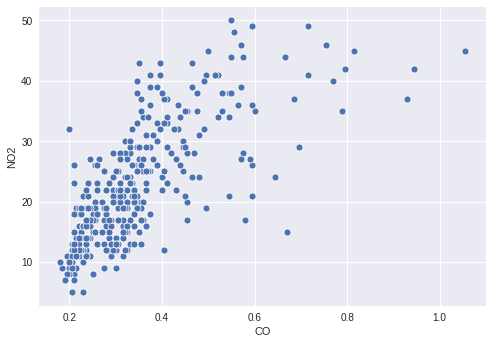Making a custom continuous palette
You are interested in the pollution levels of Cincinnati for the year 2014. Specifically, you're interested in CO and NO2, so you make a simple scatter plot to show the relationship between the two pollutants.

However, there may be some interesting information in how the value of O3 relates to the two plotted pollutants, so you decide to color the points by their O3 levels. To do this, you need to define an appropriate continuous palette and map your O3 column to it in your scatter plot.
Este ejercicio forma parte del curso
Improving Your Data Visualizations in Python
Instrucciones del ejercicio
- Create a palette that continuously maps from white to
'orangered'. - Map the column for
O3values to the color of the points. - Pass your created palette to the plotting function.
Ejercicio interactivo práctico
Prueba este ejercicio y completa el código de muestra.
# Filter the data
cinci_2014 = pollution.query("city == 'Cincinnati' & year == 2014")
# Define a custom continuous color palette
color_palette = sns.____('orangered',
____ = True)
# Plot mapping the color of the points with custom palette
sns.scatterplot(x = 'CO',
y = 'NO2',
____ = 'O3',
data = cinci_2014,
palette = ____)
plt.show()